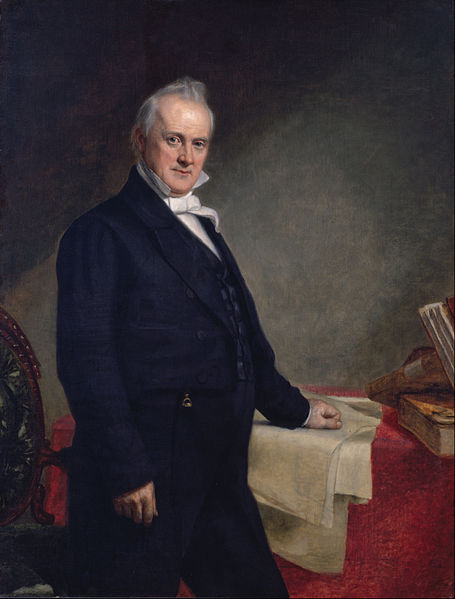The Paraguay expedition (1858–1859) was an American diplomatic mission and nineteen-ship squadron ordered by President James Buchanan to South America to demand redress for certain wrongs alleged to have been done by Paraguay, and seize its capital Asunción if it was refused. The expedition was sent without an adequate investigation of the facts; most modern scholars have considered Buchanan's complaints were probably unjustified. The real cause of the misunderstandings was that neither country had employed a competent diplomatic service. Buchanan may have had an ulterior motive, such as to distract public opinion from the domestic concerns that afflicted his presidency, and yet more sinister explanations have been put forward; but possibly Buchanan may have meant to emulate the success of the earlier Perry Expedition, which had "opened up" isolated Japan.
The Paraguay Squadron according to Harper's Weekly, 26 October 1858.
James Buchanan in 1859. His presidency was troubled by dissolving national cohesion, seceding States.
Carlos Antonio López, President of Paraguay. An irascible dictator, nevertheless he is known as the Great Builder of his country.
19th century Asunción (José Ignacio Garmendia, Museo Roca). Paraguay was emerging from isolation.
Thomas Jefferson Page was a naval officer and explorer. He served first in the United States Navy and commanded an expedition which made the first detailed hydrological studies of the Río de la Plata basin in South America. At the outbreak of the American Civil War, he resigned to serve in the Confederate Army and later the Confederate States Navy. Late in the war, Page was captain of the ironclad CSS Stonewall.
Harper's Weekly, 1859





